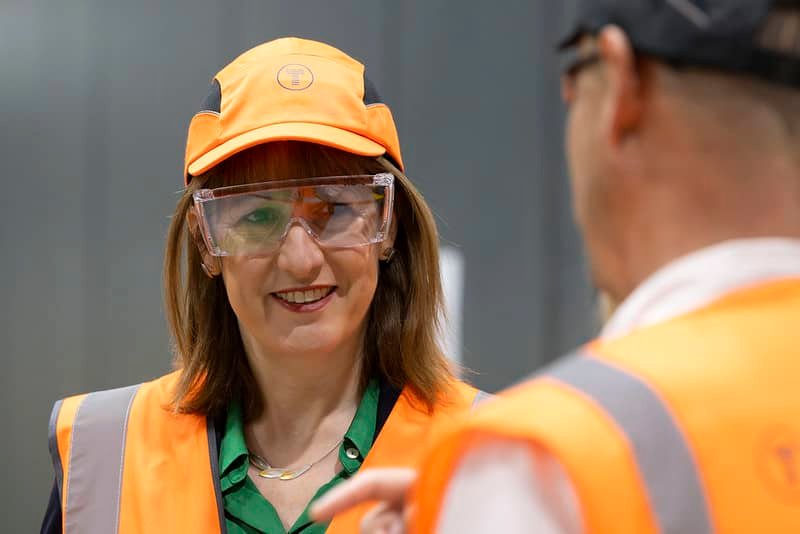
Picture by Kirsty O’Connor / Treasury
An extraordinary day of pre-budget leaks and counter-leaks leaves pound sterling on edge.
The British pound was the underperformer into the weekend following a day of chaotic unofficial briefings from the UK Treasury, which is tasked with creating the budget due for release in less than a week.
📉 The pound fell on an initial story that the Chancellor Rachel Reeves would abandon plans to raise income tax, as this raised fears the UK’s debt path would deteriorate massively.
However, “GBP staged a rebound when it was reported that the reason for dropping the planned tax hikes was due to improved growth forecasts,” says Noah Buffam, a strategist at CIBC Capital Markets.
Compare Currency Exchange Rates
Find out how much you could save on your international transfer
Estimated saving compared to high street banks:
£25.00
Compare Rates from Leading Providers →
Free • No obligation • Takes 2 minutes
The Financial Times reported Reeves was still set to raise revenues via income taxes, but by lowering the income tax threshold.
“And finally it was reported that Reeves will actually freeze rather than lower the income tax threshold,” explains Buffam.
Never before has a budget been leaked in such a kak-handed manner by a British government, and the chaotic approach to the process gives markets reason to be extremely wary of what will come in the coming days and in the budget itself.
This wariness will reflect in a risk premium on sterling exchange rates that should keep it on offer in the coming days.
💬 Citi describes the British pound’s recent price action as “ugly” and the bank’s strategist Jim McCormick warns that markets remain highly sensitive to fiscal noise: “Another budget of a million small tweaks is not credible, and this is a negative.”
The budget had become less of a risk to GBP following the release of Treasury briefings that Reeves would look to quash a black hole of some £30BN by raising income tax by 2p in the pound. This was a credible way of generating revenue and reassuring markets that the UK has a grip on its debt.
💬 However, John Briggs at Natixis says “the government’s subsequent U-turn on this plan has backfired, creating renewed policy uncertainty that unnerves investors supporting the high risk premium on Gilts.”
Given pound sterling’s tight correlation with gilt markets, any risk premium on gilts will be reflected in a similar risk premium on sterling.
The following chart from Deutsche Bank reflects such a risk premium in the EUR/GBP exchange rate:
As the above chart shows, that premium emerged in July when Reeves was famously forced to abandon plans to cut welfare spending by her left-wing Labour Party colleagues.
In short, the pound suffers a credibility gap that won’t be easily lost.
📊 George Saravelos, Global Head of FX Research at Deutsche Bank explains that the pound could have actually welcomed a credible budget and closed the credibility gap:
“Avoiding negative surprises with respect to projected gilt issuance, changes in the deficit over the next two years, and leaving more headroom against fiscal rules would, in isolation, open up a path for EUR/GBP to revert towards its front-end implied fair value (currently just under 0.86).
However, he explains, “lingering political risks are unlikely to allow for a full removal of this fiscal risk premium, even in the event of a smoothly delivered budget from a market perspective.”
🗡️ UK politics is back as a headwind for UK assets, amidst this week’s renewed rumours that the knives are out for Prime Minister Keir Starmer. It was as recently as September that he first had to bat away chit-chat about a challenge.
“Multiple events over the coming months could, either in isolation or aggregate, result in a leadership challenge. The uncertainty effect and the possibility of a successor who puts less emphasis on fiscal discipline could see the risk premium extend back out again,” says Saravelos.
🧭 For now, Deutsche Bank remains comfortable with its end-of-year forecast for EUR/GBP close to spot levels (0.88).
“We bring forward our forecast for EUR/GBP to reach 0.90 by the middle of next year and will update our views and trade recommendations in due course,” says Saravelos.
EUR/GBP equates to a pound to euro conversion of 1.1360, while EUR/GBP at 0.90 gives 1.11 GBP/EUR.



















